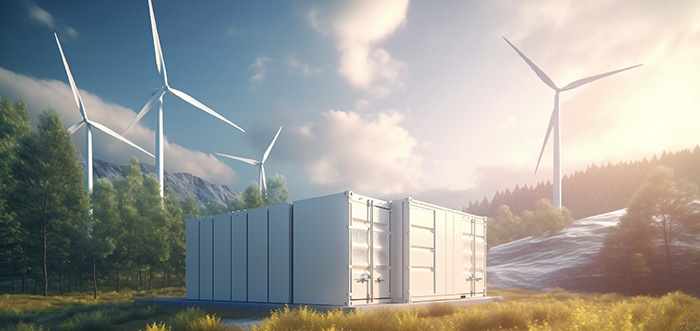In the vast landscape of renewable energy, wind power has become a crucial pillar of the global energy transition due to its clean and renewable nature. With advancing technology and increasing market demand, the two main types of wind turbines—Horizontal Axis Wind Turbines (HAWT) and Vertical Axis Wind Turbines (VAWT)—each showcase unique advantages and challenges. This blog by Home Power Inverter aims to provide a detailed analysis to guide decision-makers, investors, and industry experts.
Efficiency and Performance: Power Output at a Technical Depth
Horizontal Axis Wind Turbines (HAWT): Horizontal axis wind turbines are renowned for their superior efficiency and performance, largely due to their design where the rotor axis is parallel to the ground. This allows the blades to capture high-speed, stable winds at higher altitudes, achieving greater power conversion efficiency. Typically featuring multi-blade designs and advanced aerodynamic principles, HAWTs are optimized for maximum energy capture. In wind-rich regions, such as open plains, coastal areas, and high-altitude zones, HAWTs excel as the backbone of large wind farms.
Vertical Axis Wind Turbines (VAWT): While vertical axis wind turbines may not match HAWTs in efficiency, they have distinct advantages in specific applications. The vertical rotor axis design makes VAWTs more adaptable to frequent changes in wind direction and turbulent wind fields. Additionally, VAWT blades can rotate effectively even at low wind speeds, making them suitable for areas with less stable wind resources. Recent technological advancements, such as variable-pitch control and optimized blade shapes, have significantly improved VAWT efficiency, narrowing the gap between the two.

Space Layout and Installation Flexibility
Space Requirements: HAWTs generally require large land areas and tall towers to ensure the blades capture stronger winds at higher altitudes. While this design increases efficiency, it also limits installation options, especially in urban or mountainous areas where space is constrained.
Installation Flexibility: In contrast, VAWTs’ compact design offers greater installation flexibility. They can be mounted directly on the ground without the need for tall towers, making them ideal for urban environments, rooftops, islands, and remote locations with limited space. The modular design of VAWTs also simplifies transportation and installation, reducing construction complexity and costs.
Maintenance Costs and Durability Considerations
Maintenance Costs: HAWTs, with their relatively simple structure and fewer mechanical components, are easier to maintain. However, the need for high-altitude operations due to tall towers and large blades adds complexity and risk to maintenance. Key components like gearboxes can also incur higher maintenance costs.
Durability: VAWTs face durability challenges due to their more complex structure and higher mechanical stress. However, advancements in material science and manufacturing techniques have greatly improved the durability of modern VAWTs. Additionally, VAWT blades and key components are closer to the ground, making regular inspections and maintenance easier and less costly.
Noise and Visual Impact Assessment
Noise Control: Traditionally, vertical axis wind turbines have been known for generating more noise due to their complex mechanical structure and frequent interaction between blades and air. However, modern VAWTs have incorporated low-noise designs and noise suppression technology, significantly reducing noise levels to be comparable with HAWTs. On the other hand, while HAWTs operate at higher altitudes, their large blades and gearboxes can still produce noticeable noise, especially in high wind conditions.
Visual Impact: VAWTs, with their distinctive appearance and lower installation height, tend to blend more seamlessly into their surroundings, reducing visual disruption. This is particularly beneficial for preserving natural landscapes and enhancing urban aesthetics. In contrast, HAWTs, with their towering structures and large blades, can be visually imposing, though they symbolize humanity’s impressive harnessing of wind energy.
Cost-Effectiveness Analysis
Initial Investment: Currently, HAWTs benefit from mature technology, large-scale production, and intense market competition, which keep their initial investment costs relatively low. VAWTs, being a newer technology, may have higher upfront costs, but this gap is expected to narrow as VAWT technology becomes more widespread and production scales up.
Long-Term Costs: When considering long-term costs, factors such as initial investment, maintenance, equipment lifespan, and energy output must be taken into account. HAWTs' efficiency gives them a competitive edge in energy output, though their higher maintenance costs and potential failure rates are concerns. While VAWTs may have higher initial costs, their lower maintenance expenses, longer lifespan, and adaptability to specific environments can make them more cost-effective over the long term.

Conclusion: Tailored Solutions and Comprehensive Considerations
In conclusion, choosing between HAWTs and VAWTs is not a straightforward decision. It requires a comprehensive evaluation of the specific application scenario, wind resource conditions, budget, and environmental considerations. HAWTs are the more efficient choice for wind-rich, spacious regions, while VAWTs offer unique advantages for areas with unstable wind resources, limited space, or a need for seamless integration into urban landscapes. As technology continues to advance, both types of wind turbine systems will likely see ongoing optimization, driving the wind power industry forward.
